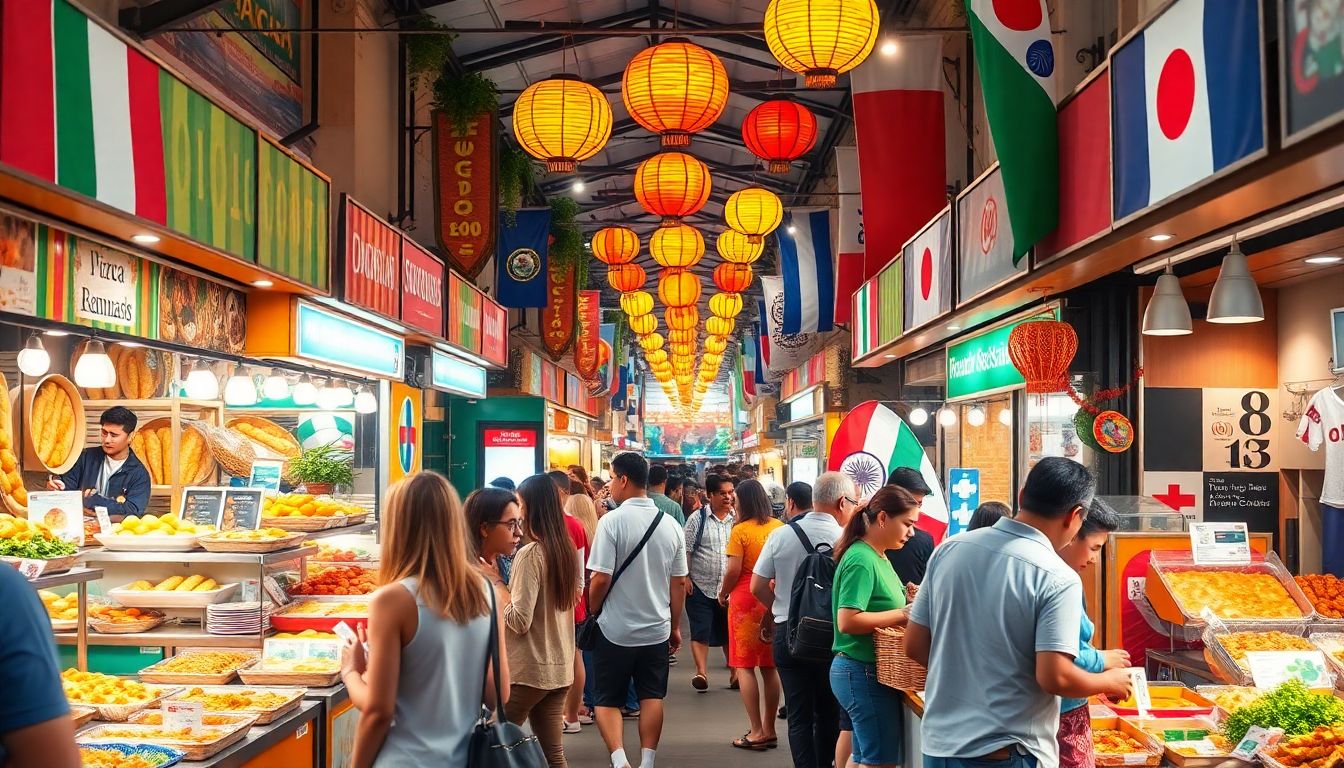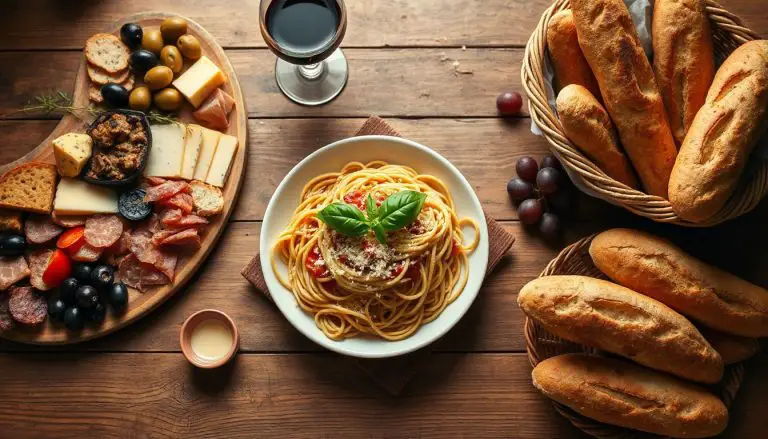Discovering Famous Foods in Tourist Countries: A Culinary Journey Through Iconic Destinations

Introduction
Food is more than just fuel; it’s a big part of culture and history. When traveling, tasting local dishes can be just as exciting as sightseeing. Authentic foods tell stories about a place’s traditions and people. Many travelers choose destinations based on their signature foods, making culinary experiences a highlight of any trip. From spicy street foods to elegant dinners, exploring foods in popular tourist countries adds flavor to your journey.
The Allure of Italian Cuisine: Pizza, Pasta, and More
The Origins and Evolution of Italian Food
Italy’s food scene is rich and diverse. Each region has its own special recipes and ingredients. Think about how Tuscany’s hearty bread pairs with local cheeses, or how Sicily’s citrus fruits flavor desserts. Italy’s culinary traditions are so admired that UNESCO named them a part of the world’s intangible cultural heritage. Classic dishes have been passed down through generations, blending history with modern tastes.
Must-Try Dishes in Italy
- Neapolitan pizza in Naples: Thin, crispy, topped with fresh tomatoes, mozzarella, and basil.
- Tagliatelle al Ragù in Bologna: Wide pasta noodles served with a slow-cooked meat sauce.
- Tiramisu: A creamy dessert made with coffee-soaked ladyfingers, mascarpone cheese, and cocoa.
Cultural Tips for Food Enthusiasts
When dining in Italy, look for busy street vendors or cozy bistros for authentic flavors. A small, family-run restaurant often has the best food. Use cues like menus written in Italian or locals eating leisurely to find genuine spots. Remember, Italians take their food seriously—learn a few basic dining manners. For example, avoid asking for sauces on your pizza or pasta; it’s already perfectly seasoned.
French Gastronomy: The Art of Haute Cuisine and Bistros
France’s Culinary Heritage and Its Impact
French food has shaped global gourmet standards for centuries. From delicate pastries to rich stews, French cuisine reflects artistry and tradition. Many top culinary schools and chefs from around the world come to France to learn its secrets. French food is about precision, presentation, and taste.
Iconic French Dishes Every Tourist Must Taste
- Croissants and baguettes: Fresh from local bakeries in Paris, warm and flaky.
- Coq au Vin: Chicken braised with wine, mushrooms, and onions.
- Bouillabaisse: A flavorful fish stew from Provence, packed with different seafood.
Don’t forget to try local cheeses and excellent wines to pair with meals. From Brie and Camembert to Champagne or Bordeaux reds, wines and cheeses are inseparable parts of the French dining experience.
How to Experience French Food Like a Local
Visit bustling markets—from Marché Bastille in Paris to local stalls in small towns. Bistros are perfect for genuine, hearty French meals. Ask locals about their favorite spots. Pair wine with cheese at the table, guided by expert sommeliers’ advice. These simple steps help you enjoy France’s culinary charm fully.
Japanese Food Culture: Sushi, Ramen, and Beyond
The Evolution of Japanese Cuisine
Japan offers a mix of tradition and innovation in its food. Ancient recipes are still loved, but many chefs now create modern takes on classics. Seasonal ingredients play a big role, with dishes changing as the seasons do. This makes every visit to Japan a new culinary adventure.
Popular Japanese Food Items for Tourists
- Sushi and sashimi: Raw fish sliced expertly, best sampled in Tokyo’s renowned sushi bars.
- Ramen: Noodle soup with rich broths like miso, shoyu, or tonkotsu.
- Street foods: Takoyaki (octopus balls) and Yakitori (grilled chicken skewers) are must-tries in busy street markets.
When eating Japanese food, learn proper etiquette like how to use chopsticks and not to stick them upright in rice. Spotting authentic restaurants involves checking for chefs wearing traditional attire or those who focus on detail and freshness.
Tips for Enjoying Japanese Food Safely and Authentically
Stick to places busy with locals—more traffic usually means better quality. Ask servers for recommendations, especially for seasonal or regional dishes. Respect local dining manners and take part in the social aspect of Japanese meals, like shared dishes or communal eating styles.
Mexican Foods: Spicy, Flavorful, and Vibrant
The Rich Food Heritage of Mexico
Mexico’s food blends indigenous ingredients like corn, beans, and chilies with Spanish, African, and other influences. This mix creates bold flavors and colorful dishes. Food is deeply tied to celebrations and family traditions, adding layers of meaning to every bite.
Famous Mexican Foods Tourists Should Try
- Tacos al Pastor: Marinated pork on corn tortillas, often with pineapple and a splash of salsa.
- Street Corn (Elote): Grilled corn coated in creamy sauce, cheese, chili powder, and lime.
- Mole Poblano: A complex sauce made with chili peppers, chocolate, and spices, served over chicken.
- Chiles en Nogada: Poblano peppers filled with a sweet meat mixture, topped with walnut sauce and pomegranate seeds.
Pair these dishes with authentic tequilas or mezcals to complete your experience. Mexico’s vibrant street food scene offers local flavors you won’t find in fancy restaurants.
Navigating Mexican Food Scenes
Visit traditional markets and small local eateries for the best dishes. When ordering, ask for recommendations or explain your taste preferences. Most menus are straightforward, but learning a few key words helps you understand what you’re eating. Food experts say that trying street food is the best way to taste real Mexico.
Thai Cuisine: A Symphony of Flavors
The Unique Flavors and Ingredients of Thailand
Thai food is known for perfectly balancing sweet, sour, salty, and spicy tastes. Each dish is a harmony of flavors that make your mouth dance. Different regions have their signature dishes, from the spicy north to the seafood-rich south.
Must-Try Thai Dishes for Travelers
- Pad Thai: Stir-fried noodles with eggs, bean sprouts, and peanuts.
- Som Tum: Green papaya salad with lime, chili, and fish sauce.
- Tom Yum Goong: Spicy shrimp soup with lemongrass and lime leaves.
- Street food scenes: Markets in Bangkok are packed with vendors selling grilled meats, fresh fruit, and savory snacks.
Participate in cooking classes if possible. They’re a fun way to learn about Thai ingredients and flavors firsthand. Always choose clean stalls where food is freshly prepared to stay safe.
Authentic Thai Food Experiences
Respect local customs, like removing shoes before entering homes or food stalls. Follow guides or locals’ advice on what to try. Street food in Thailand is legendary, but pay attention to hygiene. Once you experience the vibrant taste of Thai dishes, your trip will never be the same.
Conclusion
Exploring local foods transforms travel into a deeper adventure. Food reveals cultural stories, brings people together, and creates unforgettable memories. Before your trip, research regional specialties. Be brave enough to try street foods and ask locals for their favorites. Engaging with chefs and guides makes your culinary journey even richer. Approach each destination with an open mind and a curious palate—you’ll come home with more than souvenirs, but with the flavors of the world on your plate.







